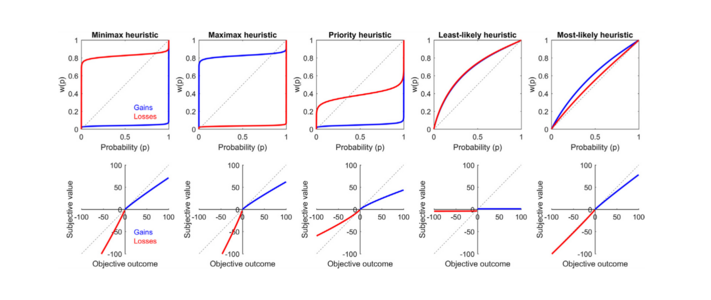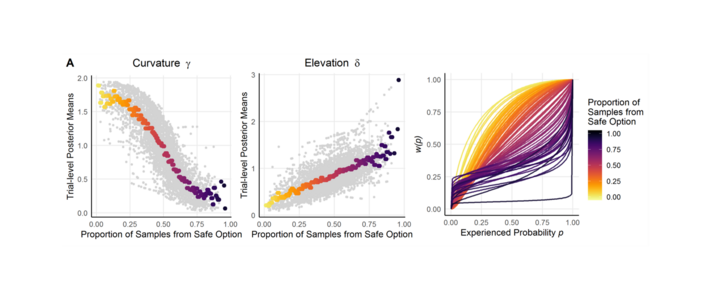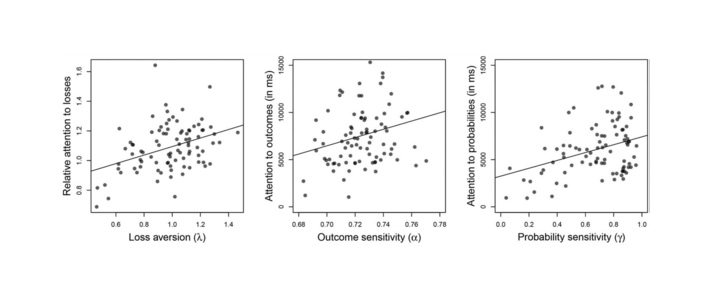Theory integration
For a comprehensive understanding of our behavior, we develop and test a large variety of theories and corresponding models. Some of these explanations compete with each other as their assumptions and predictions are mutually exclusive. Other explanations, however, coexist without conflict because they operate on different levels of explanation or consider different behavioral aspects. A core task is thus to elaborate how theories and models relate to each other.
Our research focuses on the integration of theories and models of decision making and cognition. For instance, one class of models that figures prominently in the literature on risky choice are so-called psychoeconomic models. These models accont for how choices deviate from the normative prescriptions motivated by some optimization principle (e.g., expected value maximization). Such models capture important aspects of human choice behavior, but they do not explain how we actually process the relevant information about choice options. On the other hand, so-called process models aim to explain these underlying information transformations, or cognitive mechanisms--that is, how we search for information, terminate search, and process these information to make a final choice. In a series of studies, we (Zilker and Pachur, 2021; Pachur et al., 2017, 2018) demonstrate how psychoeconomic models and process models can complement each other. For instance, our simulations and empirical analyses show that specific patterns in attention allocation during the information processing phase, as well as the use of specific decision strategies (heuristics), can lead to characteristic deviations from expected value maximization and signatures in a psychoeconomic model.


